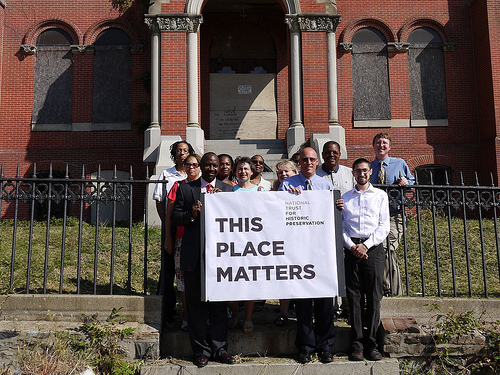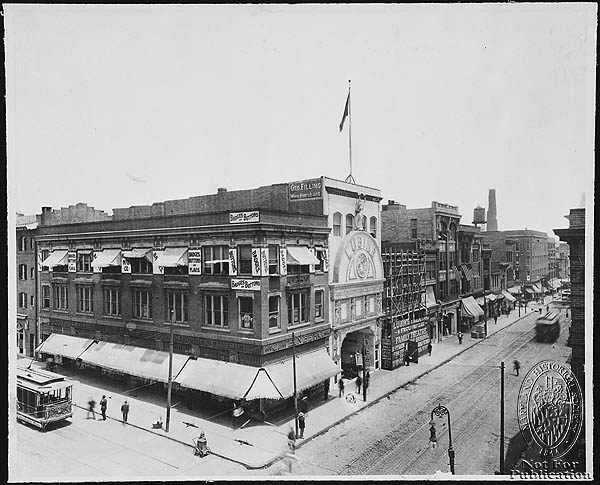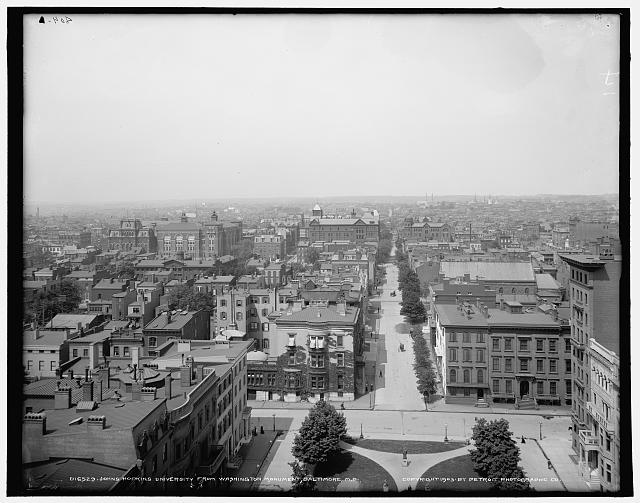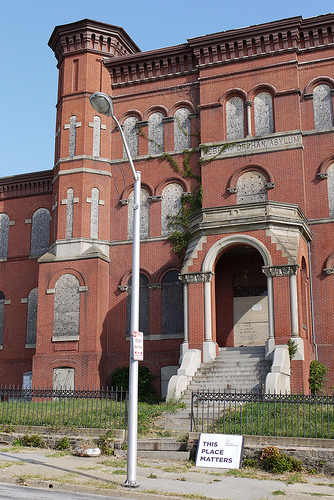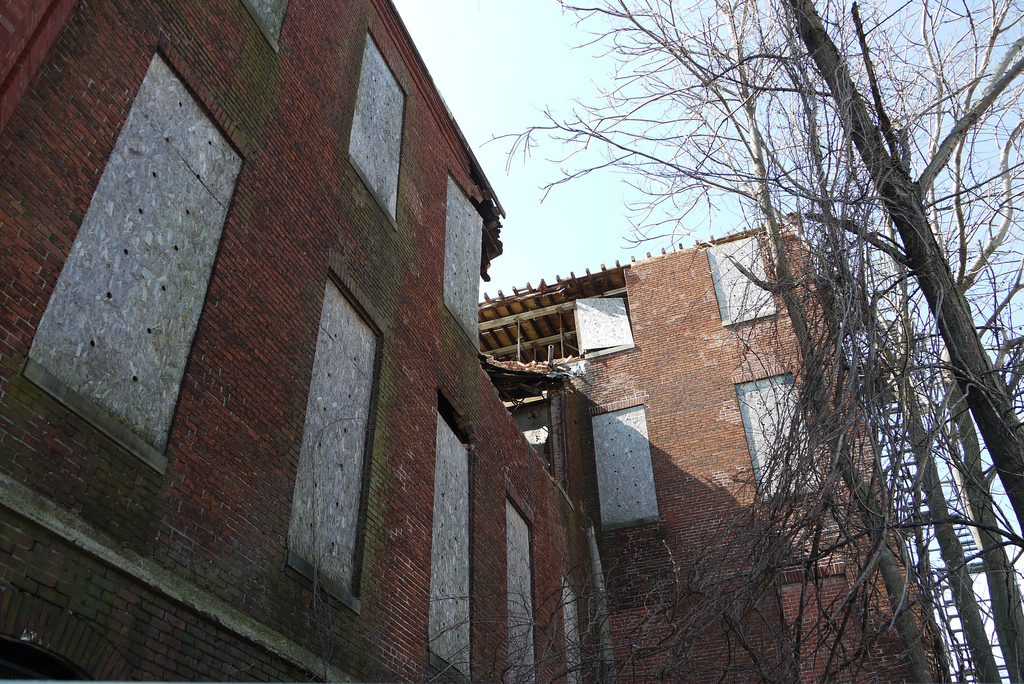
The past few months have seen both modest progress for our efforts to preserve and reuse Baltimore’s Hebrew Orphan Asylum and a setback to the condition of the building. On the afternoon of February 25, high winds combined with continued deterioration of the roof caused a significant collapse to the rear wall of the Hebrew Orphan Asylum. The collapse dropped a large amount of brick and other debris into the lot behind the building. Fortunately, none of the residents or staff at the adjoining Tuerk House were injured and Coppin State University, with assistance from Brawner Contractor Inc., took quick action to erect a safety fence around the area. Coppin State University, in consultation with its contractor and structural engineers, has started the process of assessing the damages to the building and preparing plans for the design and reconstruction of the collapsed building elements. Additional photos of the building both before and after the recent collapse are available in the Friends of the Hebrew Orphan Asylum Flickr set.
Despite this new challenge, Baltimore Heritage and Coppin State University are continuing to move forward with planning, education and outreach efforts to ensure a vital future for this nationally important Baltimore building. With funding from the National Trust for Historic Preservation and Preservation Maryland, the Coppin Heights CDC is working with development consultant Ms. Wendy Blair to prepare a feasibility study on the reuse of the Hebrew Orphan Asylum. The study will explore a range of possible uses and include an opportunity this spring for area residents and others to share their own perspectives on the revitalization of the Hebrew Orphan Asylum and the former Lutheran Hospital site. Baltimore Heritage is partnering with the Coppin Heights CDC to facilitate this public input process over the next few months.
Our continuing programs have expanded the Friends of the Hebrew Orphan Asylum Facebook page to over 100 supporters with hundreds more on our e-mail list. In early February, over 30 of you came out to the Pratt Library Edmondson Avenue Branch for our program on the past and future of the Hebrew Orphan Asylum. In early March, we had the opportunity to share the story of the how Baltimore’s Jewish community established and built the orphanage with a group of Towson University students in Dr. Valerie Thaler’s American Jewish History class. Finally, Anita Kassof, Assistant Director of the Jewish Museum of Maryland, highlighted the Hebrew Orphan Asylum in a recent article for “Generations,” the JMM’s annual magazine. The article tells the story of how the Hebrew Orphan Asylum offered a caring home for orphaned and destitute children under the leadership of Rabbi Samuel Freudenthal.
We’re are looking for more opportunities to share information on the rich history and exciting future of this great Baltimore landmark. Please invite us to come out and speak with your group or congregation this spring!

